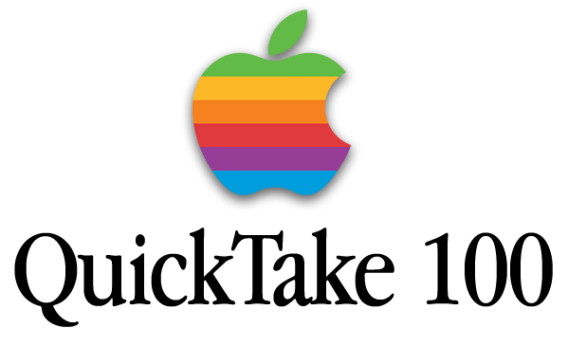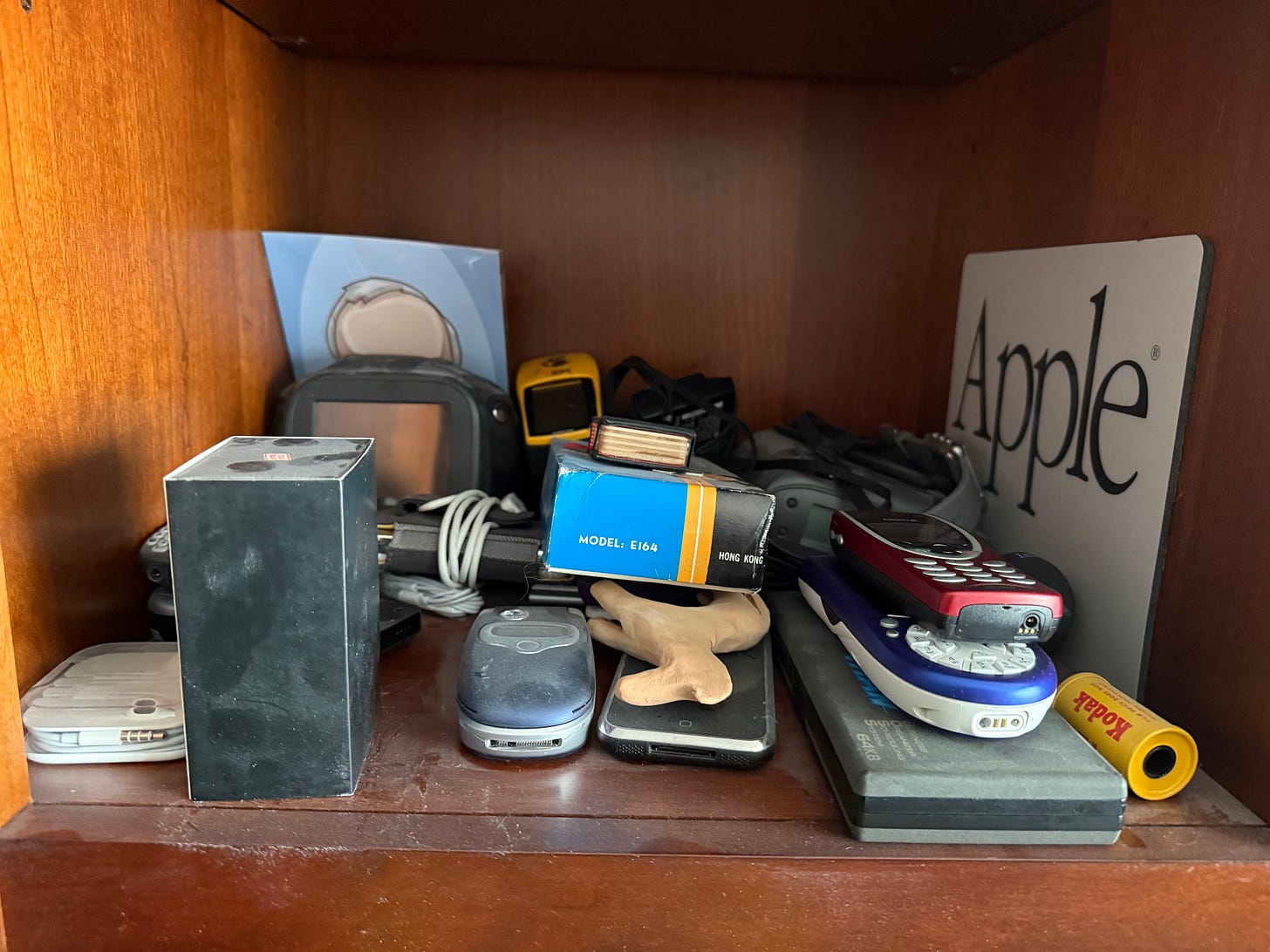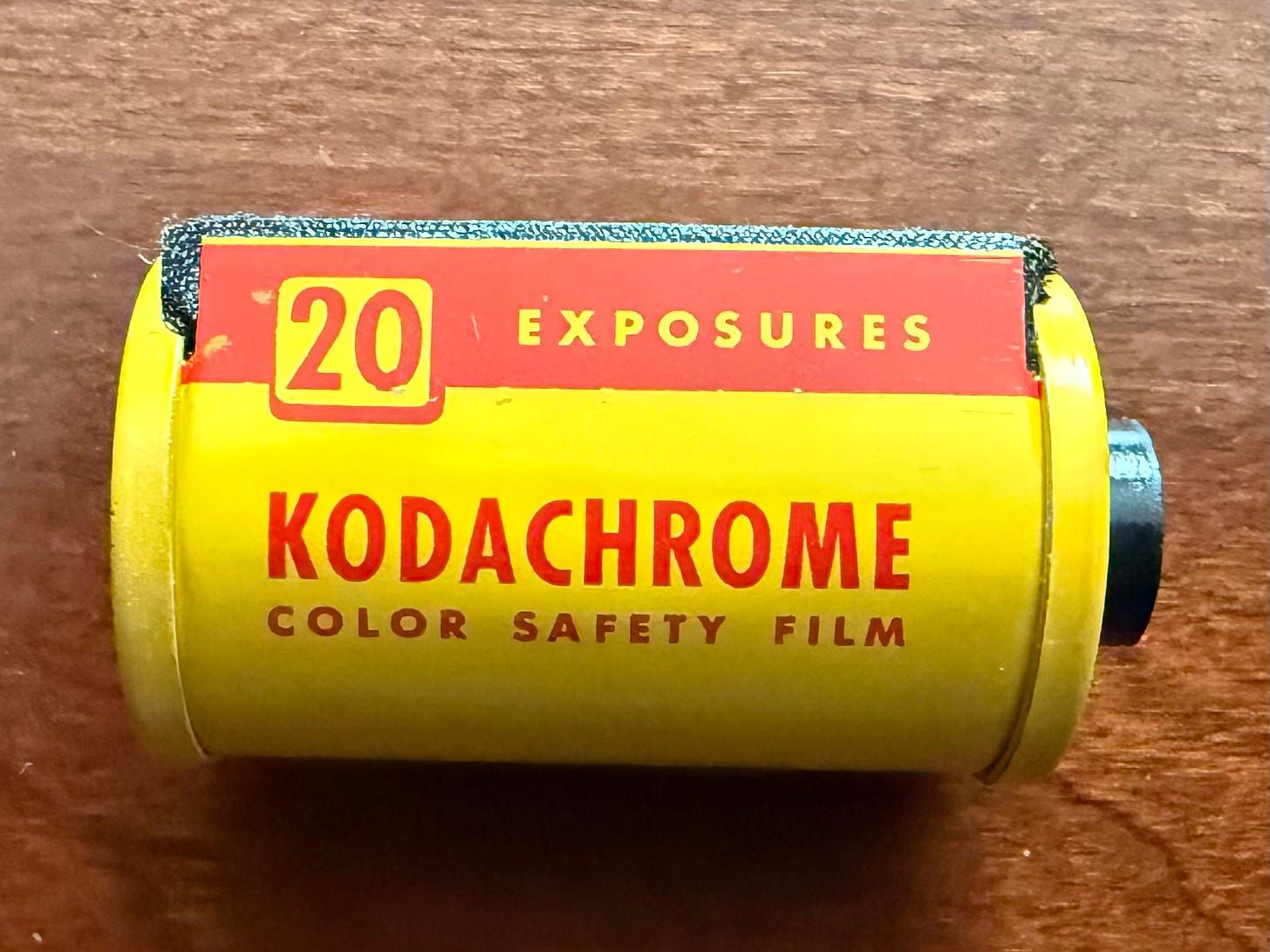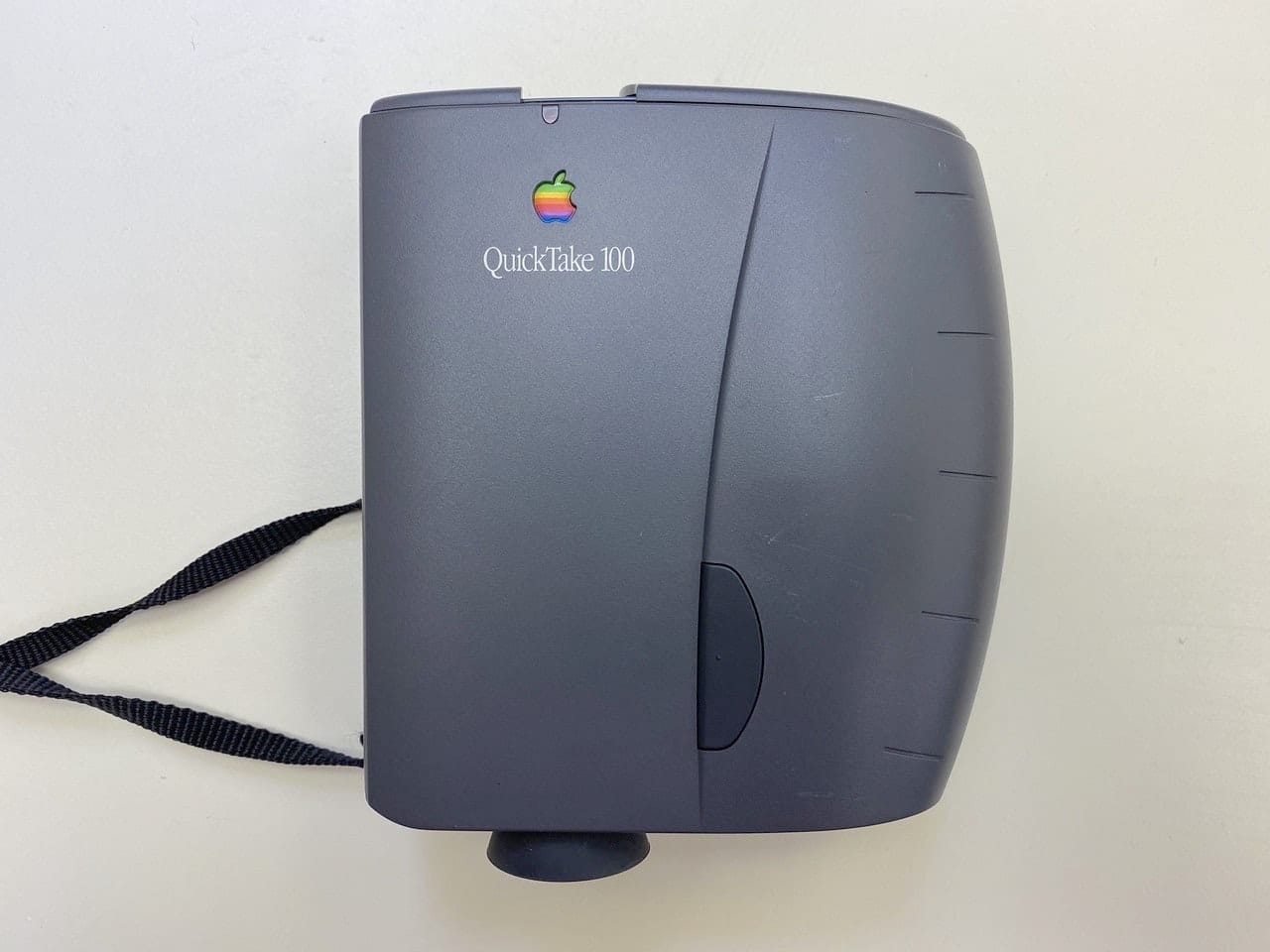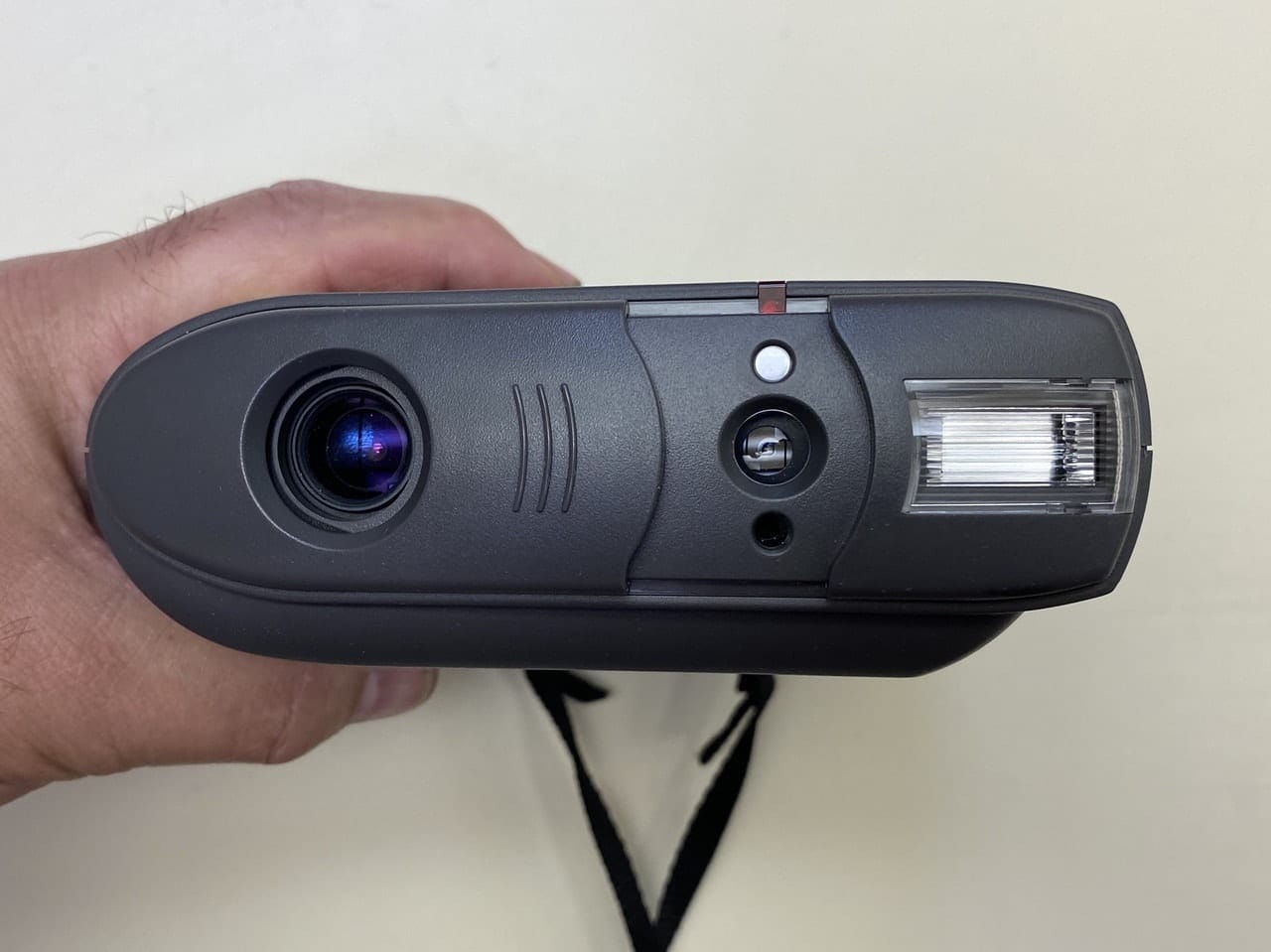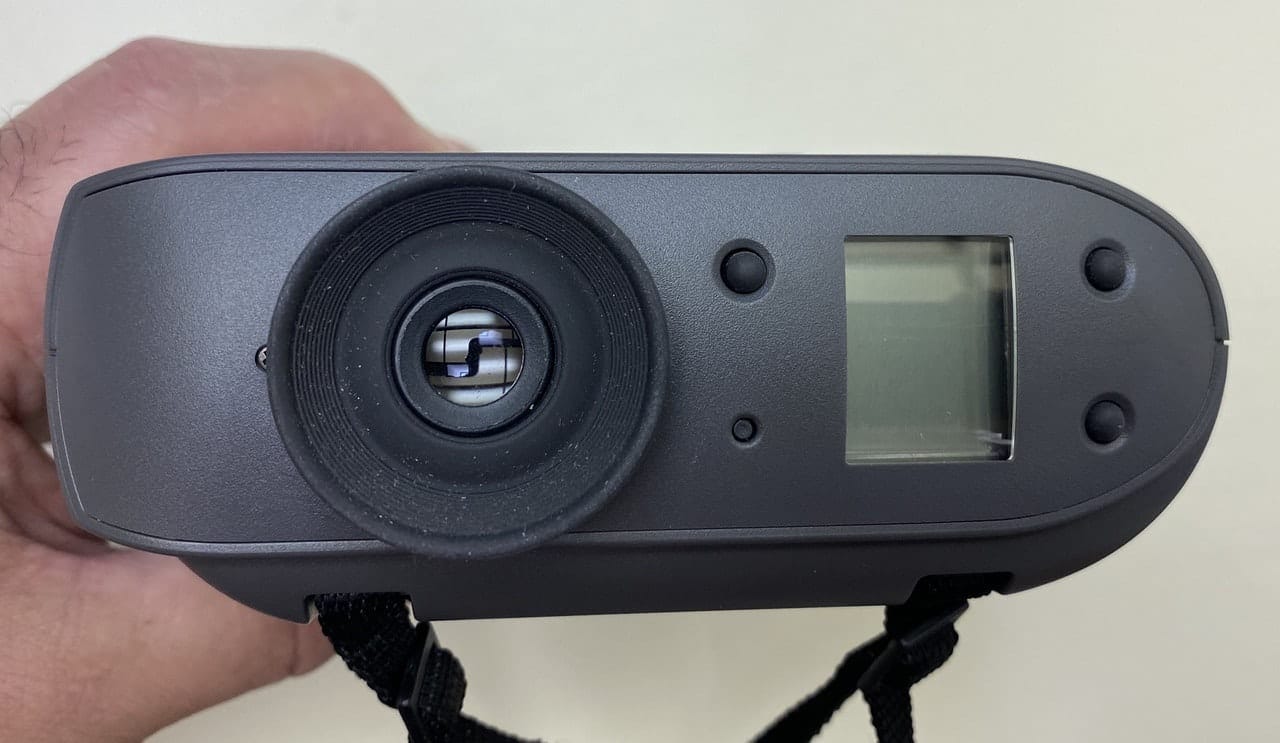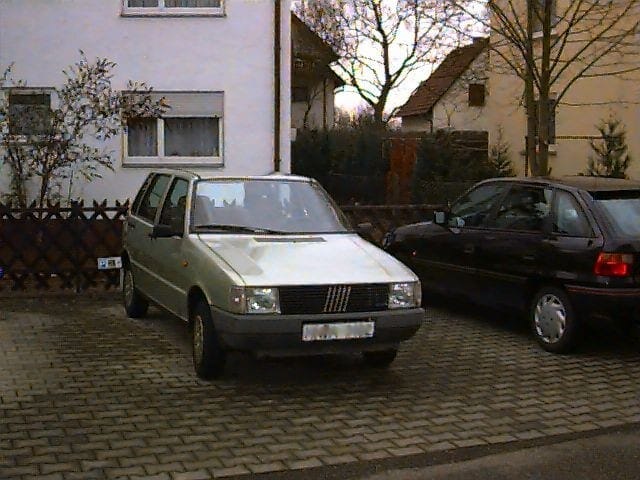The Museum of Obsolete Tech: Apple QuickTake 100
It was clunky, ate batteries, and took mediocre photos, but it was the first popular consumer digital camera.
I’ve always been an early adopter of tech… in some cases being one of the first people in my immediate circle to latch onto some new and exciting thing. It was that way with personal computers, the Mac, wireless networking (what we now call Wi-Fi), CDs, DVDs, you name it. Since my wife and I had been avid photographers for many years, I was also early to jump on the digital photography bandwagon.
The first consumer digital camera didn’t come from a well-known camera manufacturer like Nikon or Canon; it came from Apple. I happen to have one of these in my “Museum of Obsolete Tech” (a cluttered shelf in my office), although it was not my first digital camera. But it was the first digital camera that I actually touched, and it made me come to the realization that eventually film photography would be a niche market.
The very dusty and cluttered “Museum of Obsolete Tech”. Photo © 2025, Steven Sande
Yeah, I’m old enough to remember using cameras that you loaded with film, shooting photos without any idea of what the final product was going to look like, and then surrendering your film to someone else to develop as prints or slides. It was expensive, processing was usually slow, and the results varied all over the map. Now if you don’t like a photo that you just shot, you can erase it and take another, or edit it immediately with tools that seem downright magical!
A closeup of the one roll of film I have in the Museum… which I think is exposed. Photo © 2025, Steven Sande
My first hands-on experience with any digital camera was with the Apple QuickTake 100 at the May 1994 Apple Worldwide Developers Conference in San Jose, California. I believe it was at a evening session, and Apple had a table set up where you could have your photo taken with the QuickTake, and they would work it into a faux Macworld Magazine cover and present you with a printout.
Apple QuickTake 100 Digital Camera from above. The black “crescent moon” thing is the shutter button. Photo © 2020, Steven Sande
It was a wonderful marketing idea, only in practice it didn’t work out that well. The QuickTake 100 could only store about eight 640 x 480 pixel color images, or 32 320 x 160 pixel images. In either case, once they filled up the memory (there was no removable media), Apple staffers had to stop taking photos and connect the camera to a Mac with a serial cable. The software on the Mac was an “Apple QuickTake” program that pulled the images from the camera and allowed simple editing like rotating, cropping, and resizing.
The business end of my QuickTake 100 (hand for scale). At left is the actual lens, the “lens” in the middle is for the look-through viewfinder with a couple of sensors above and below, and the flash is at right. Photo © 2020, Steven Sande
The back end of my QuickTake 100. The optical viewfinder is at left (not digital), and LCD at right showed how many photos you had taken. Photo © 2020, Steven Sande
Well, it took quite a while for those low resolution (my iPhone 16 Pro Max can shoot at a resolution of up to 48 megapixels, the best the QuickTake 100 could do was about .3 megapixels) images to transfer to the Mac. Once that was done, some poor Apple employee had to overlay the image with the fake magazine cover, and then send it to a QMS ColorScript Laser 1000, which at less than $15,000 was the first “affordable” color laser printer. The images took about 2-3 minutes just to print, and the entire process was very slow (I’m thinking it was about 10 minutes per picture), so a lot of the attendees gave up on having their photos taken! A few days later I was able to hold a QuickTake 100 and actually take a picture with it, although I never saw the final image.
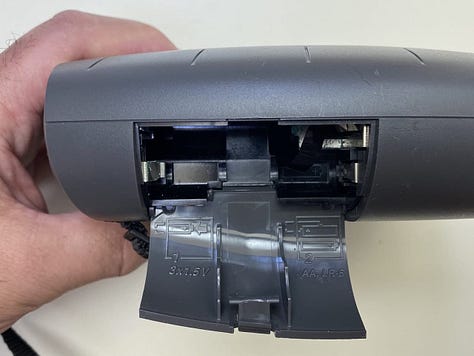
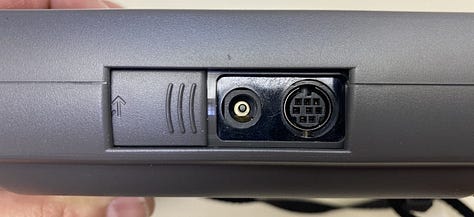
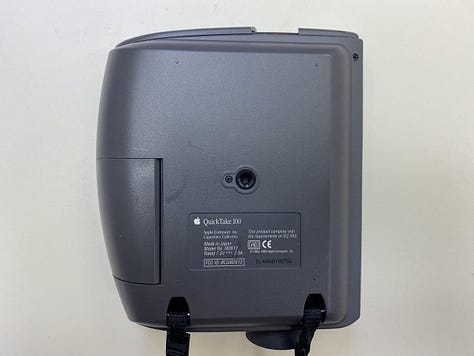
Despite the relatively poor performance of the QuickTake 100, it had one thing going for it: it was the first digital camera to gain widespread consumer acceptance, and it was very popular — even with a price tag of $749 (that’s like $1637 in 2025 dollars!).
At 640 x 480 pixels, the images weren’t that great, so I kept myself from succumbing to consumer envy and didn’t buy a digital camera until late 2001, when I bought a Canon PowerShot S100 Digital Elph. It boasted a 2.1 megapixel sensor, and I used it with a great deal of success at the 2002 Winter Olympic Games in Salt Lake City, even after dropping it about 20 feet onto the hockey rink!
The QuickTake camera I have in the “Museum” was a freebie. My nephew was a graduate student at MIT around 2010 and found it (and some other vintage equipment) in a discard pile. He smartly grabbed it and asked me if I wanted it. Yep! I sure did!
The QuickTake 100 had a fixed-focus lens that gave it an angle of view equivalent to a 50mm lens on a 35mm camera. There was no zoom and no focus, but those who wanted to take low-light photos were in luck — there was a built-in flash.
Exposure was set by the camera. Using a slow film speed equivalent of ISO 85, the shutter speeds ran from 1/30 to 1/175 of a second and aperture from f/2.8 to f/16. Here’s a sample photo at the “high-resolution” 640 x 480 mode:
QuickTake 100 Image by Gmhoffman via Wikimedia
The QuickTake 100 had no screen, so there was no way to view your photos on the camera itself. Instead, they were connected to either a Mac or Windows machine (support for Windows came late in 1994) with a GeoPort serial cable. Files were in a proprietary QuickTake format, and were exported as PICT files.
If for some sick reason I suddenly decided today that it would be a good idea to take photos with this camera, it would require a pretty good investment in some other retro tech. I’d need a mid-1990s Mac running System 7 or 8, the necessary cable, and the QuickTake software. Current Macs do not support the old Apple serial protocol, and even some of the web-based online emulators would find talking to the camera with a custom USB-C to serial connector to be impossible. As of today, there is only one contemporary application that can even read PICT files — Graphic Converter.
Today my QuickTake 100 sits on a shelf collecting an healthy layer of dust along with other obsolete equipment, a testament to the first really successful line of digital cameras.
What was your first digital camera, and what year did you get it? Leave your answer as a comment.
If you’d like to read more about retro computing and one guy’s life in tech, consider subscribing to LifeBits for free. If you found this glance at tech history to be informative or at least amusing, consider being a paid subscriber! You don’t get anything special for paying for a subscription, except the money generated gives me a chance to try some new techie toys to play with and write about.
It’s also helpful if you “Like” this and other LifeBits posts, as that makes my writing more visible on Substack.
Until next time… keep filling up your phone and the cloud with your digital photos!


